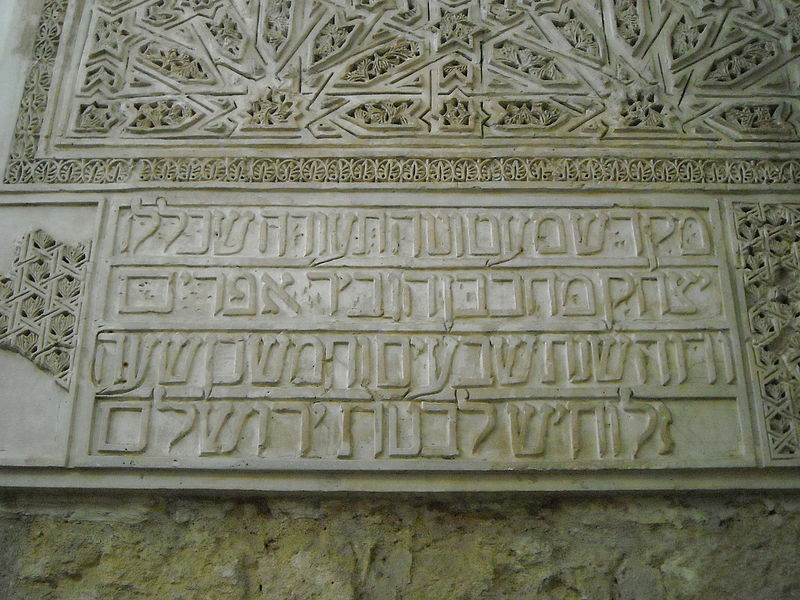
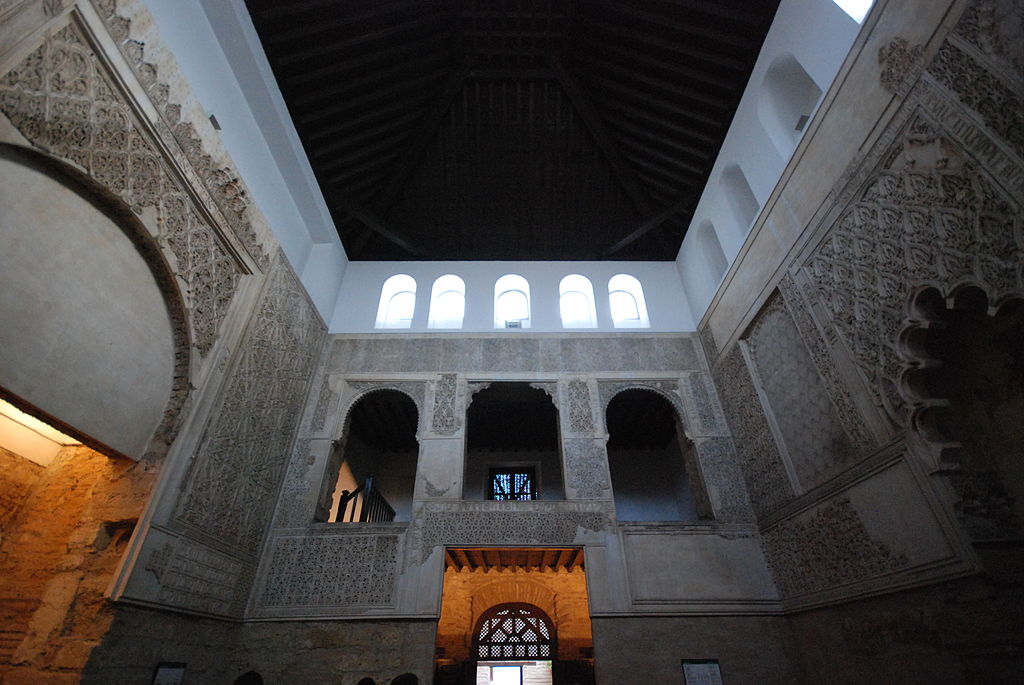
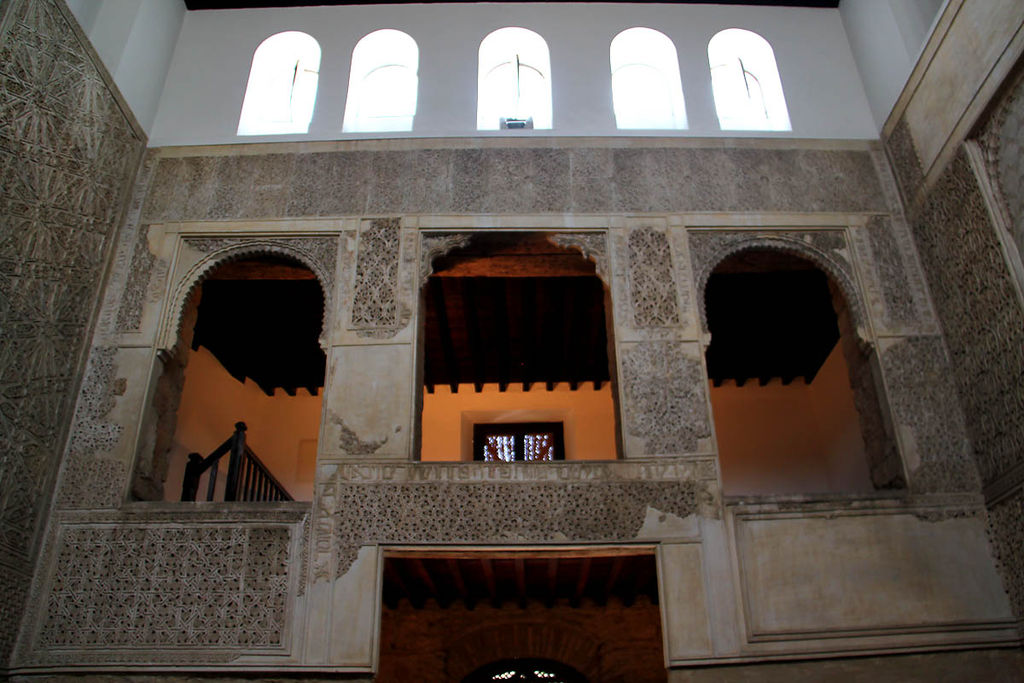
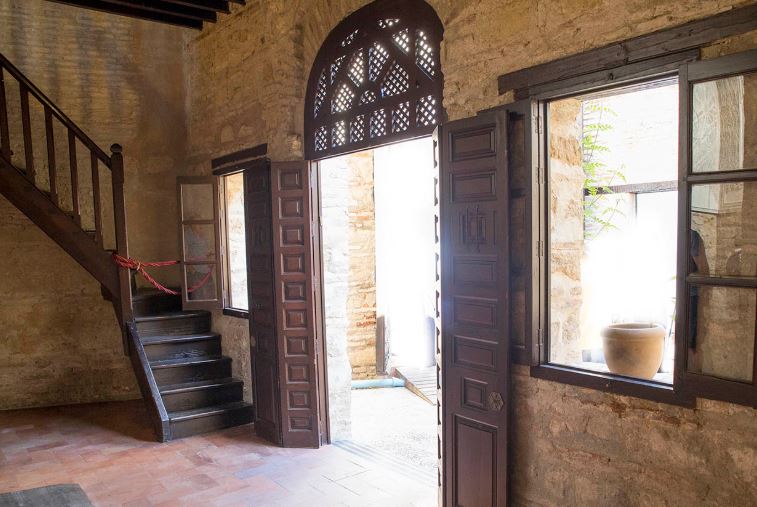
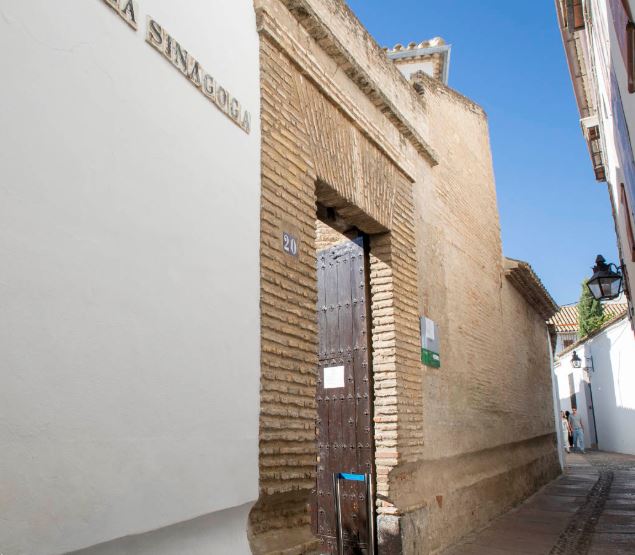
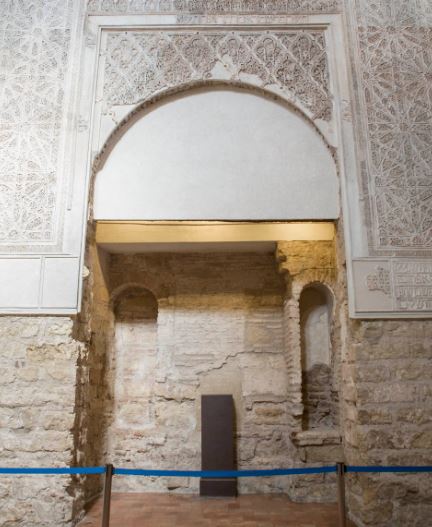
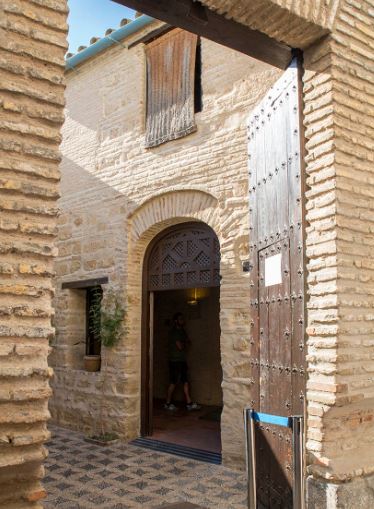
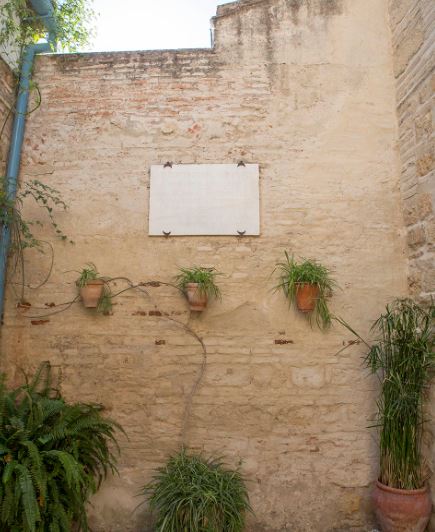
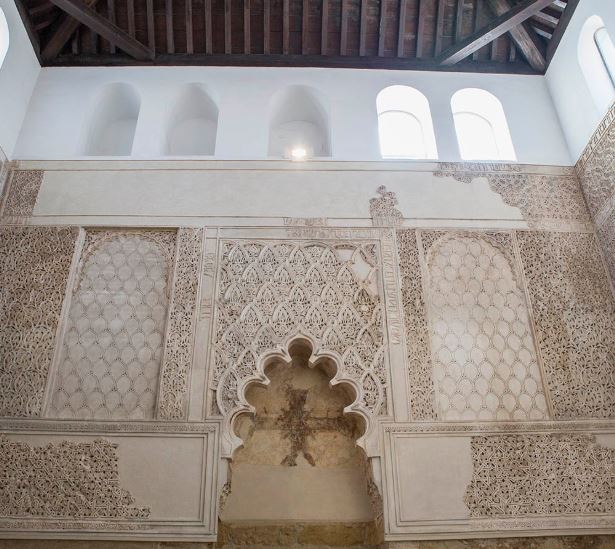
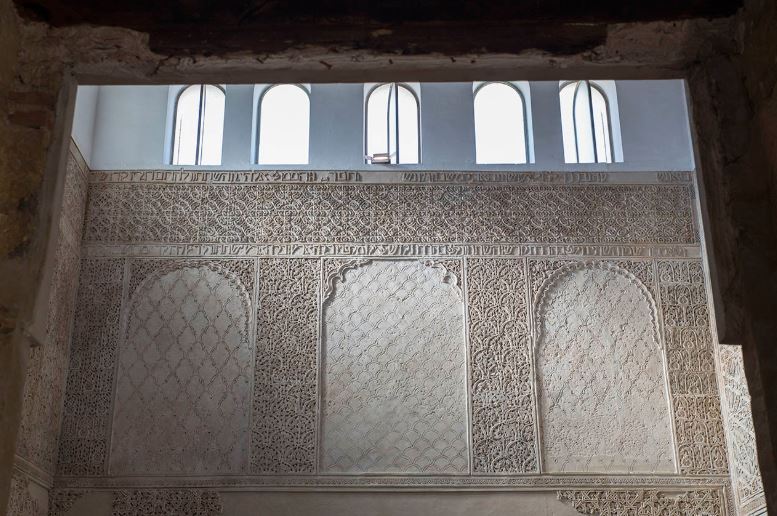
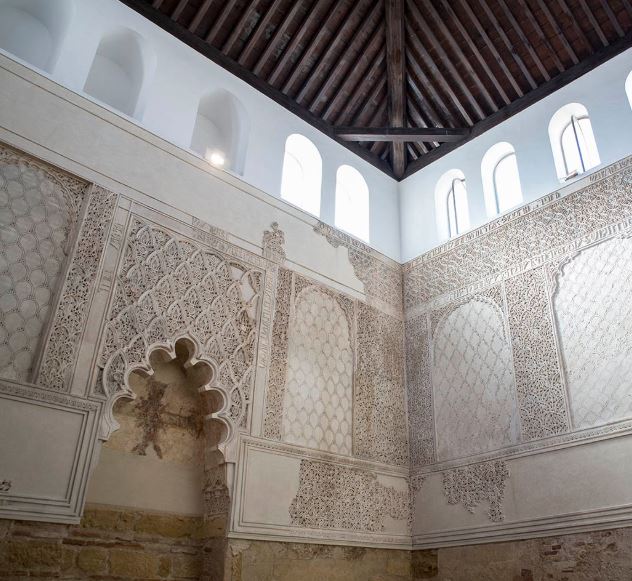
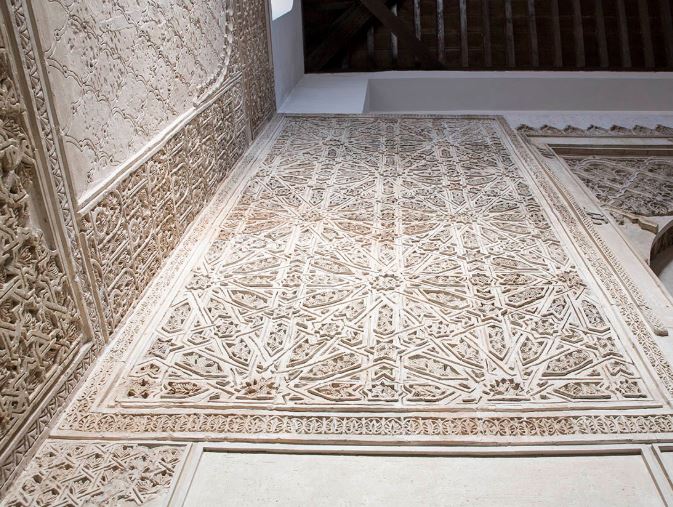
Chronology. The year 1315
Style. Mudejar
Description. After the expulsion of the Jews in 1492 the building was dedicated to various functions: hydrophobic hospital of Santa Quiteria, Hermitage of San Crispin of the Guild of the Shoemakers since 1588 and National Nursery School until it was declared a National Monument in 1885. In 1884 a year before, part of the plastering that had covered the walls had been detached, thus exposing the walls of plasterwork that originally decorated the site. Since then he went through several phases of restoration such as that of Felix Hernandez in 1929 and those initiated in 1977 until the reopening of the building in 1985 to celebrate the 850th anniversary of Maimonides' birth. It consists of a courtyard that is accessed from the street and that leads to a hall followed by the prayer room. On the eastern side of the lobby, the staircase leads to the gallery for women. The prayer room is almost quadrangular, with 6'95x6'37 m, has coffered ceiling and reaches a height of more than 6 meters; On its eastern side the tabernacle opens, a space reserved for the Torah and crowned with an arch framed in an alfiz. The opposite side of the tabernacle has a small niche with a poly-lobed and pointed arch, where the altarpiece of Santa Quiteria was. The lower part of the walls of the Prayer Room lost its decoration, currently, only the rich plasterwork of the upper part is preserved. The ornamental works show two well-differentiated styles; the area corresponding to the women's gallery is adorned with plasterwork of rich and complicated design, which reveals Granada influences in the work. The remaining walls show a reticulate lobed arch with a pineapple in the center, whose aesthetics are close to Toledo art. The decoration is completed with prayers taken from the book of Psalms. The decoration in plaster, with Mudejar motifs, has been lost up to about two meters high, leaving the brick of its factory visible. In the 18th century, the coffered ceiling was replaced by a vault decorated with plasterwork. In the eastern wall, there is a hole designed to house the "Aron" or ark in which the five books of the Pentateuch were kept. To the right of this hole, there is an inscription in whose text alludes to Yishaq Moheb, founder of the Synagogue. Opposite this one can see a beautiful poly lobed arch that formed the frame of the "bimah" or pulpit. Pictorial remains representing a cross, dateable with probability in the sixteenth century are appreciated.
Schedule.
Monday: Closed
Tuesday to Sunday: 9:00 - 15:30 h.
Closing days: January 1 and 6 and December 25.
Prices.
Free admission to EU citizens.
0.30€ to the rest.
Rate us and Write a Review
Address: Calle de los Judíos, 20, 14004 Córdoba Phone: 957 20 29 28

0 Reviews